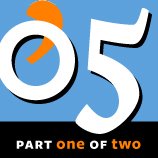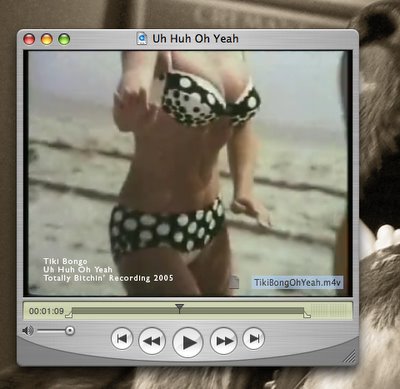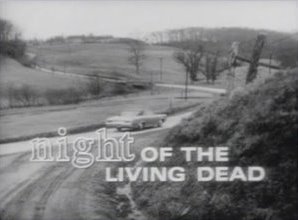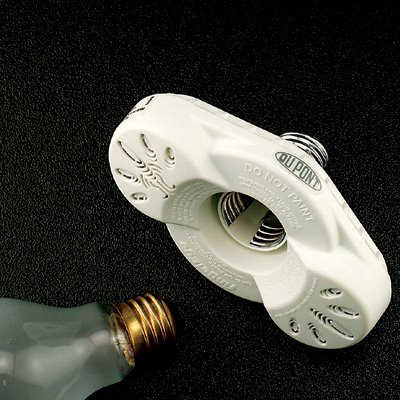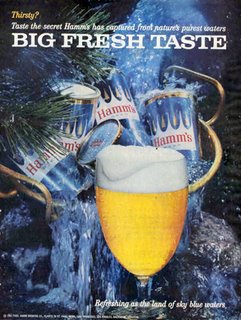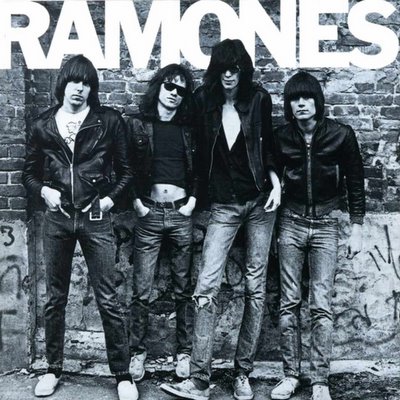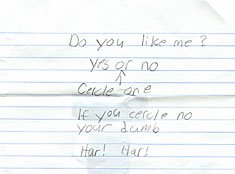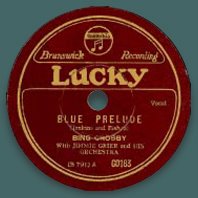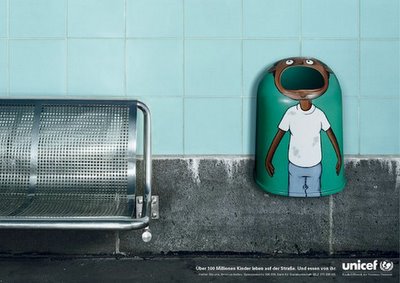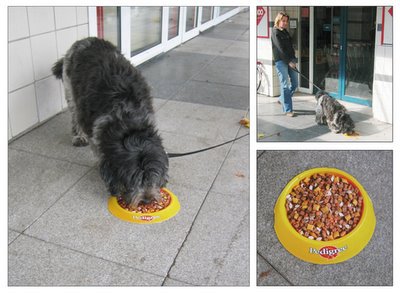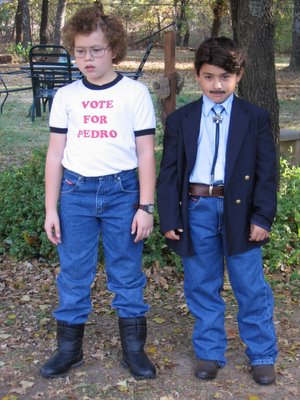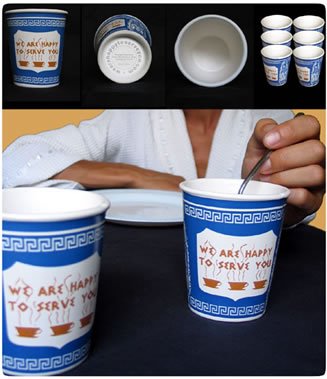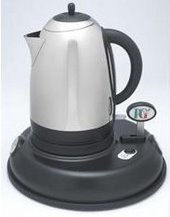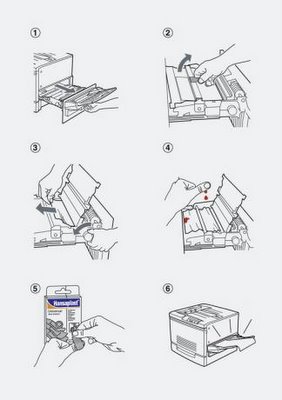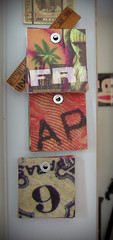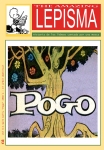
Fast Company's November issue is spotlighting 15 up-and-coming hubs for creative workers--places that draw people who are talented, tech savvy, and tolerant.
Meet the home of your next big opportunity.
Not so long ago, some techies proclaimed that communications technology and the Web would make geography irrelevant. In fact, the opposite is true: Talented people keep congregating in cities because they understand intuitively that working with other talented people spurs them to be even more creative.
For the first time, people aspire--even expect--to do work they love and to live in a community where they can be themselves. At the same time, the world of work has become increasingly temporary and insecure. As a result, talent is shifting to regions that offer dense concentrations of other talented people, tolerance of differences, and a great quality of life. These are the places that lure what Richard Florida, the Hirst Professor at George Mason University's School of Public Policy, calls the "creative class." They're scientists, engineers, artists, cultural creatives, managers, and professionals, who together comprise more than 30% of the total U.S. workforce and nearly half of the economy's wage and salary income.
The country's epicenters of such talent--San Francisco, New York, Los Angeles--are well-known. To find out which up-and-coming places show the highest rates of creative-class growth--the country's truly fast cities--we drafted Florida and his crack team of data crunchers, led by Kevin Stolarick, assistant professor with the Information Systems Program at Carnegie Mellon University. They identified the seven U.S. cities with populations between 1 million and 5 million and the three cities between 400,000 and 1 million that have offered the most potent mix of talent, technology, and tolerance in recent years. To top it off, we found a member of the creative class in each emerging city to tell us what's appealing about where they work and live.
Florida, the author of The Rise of the Creative Class (Perseus, 2002) and The Flight of the Creative Class (HarperBusiness, 2005) asserts that for 60 years, the United States had much of the world's talent pool to itself. But now, his research shows that the creative class has gone global. U.S. cities are competing with Dublin and Helsinki for creatives. And so we also asked Florida to pick five international cities that are winning chunks of the world's talent pool. Maybe one of this new generation of Fast Cities, in the United States or abroad, is the next San Francisco. You won't know until you make it happen.
San Antonio, TexasLea Ann Champion arrived in San Antonio five years ago, and she immediately fell for the Alamo city. Coming from the Bay Area, the SBC executive found San Antonio to be affordable, family-friendly, and blessed with a rich Hispanic culture. Those same city selling points helped her recruit top entertainment-industry folks from New York and Los Angeles to Project Lightspeed--SBC's initiative to bring IP-based voice, video, and data to the home--which she heads up as senior executive vice president of IP operations and services. "It's been easy to attract amazing talent," says Champion, who's drawn more than a dozen team members from outside San Antonio. In the five years she's been there, Champion, 47, has watched as San Antonio's economy has diversified away from the military, adding tourism, manufacturing, and high-tech jobs. She expects the SBC-AT&T merger only to add more. "I already see the effects of [SBC] attracting other companies to locate their key personnel here in this city," she says. "There's truly a pulling effect going on." -JM
Cornerstones: SBC, the Baby Bell about to swallow its mama, AT&T, will become the largest telco when the merger goes through. Artpace is one of the country's most respected contemporary arts residences.
Caveats: San Antonio is diverse, thanks to its Hispanic population, but there's not much melting of the pot going on. Its "integration" measure, which looks at how well ethnic groups are dispersed, is the lowest of our U.S. cities.
Sacramento, CaliforniaSandra Gonzalez grew up in a family that picked fruit throughout California. "I got into the wine business by osmosis," she says. But it was during her 10 years working for the Wine Institute, a California trade association, that she came to realize that wineries were doing little to cater to Latino customers. In 2002, she founded Vino con Vida ("wine with life"), a wine-education company, to change that. Gonzalez, 36, has worked with such wineries as Round Hill Vineyards, writes for trade publications, and appears at industry events. She picked Sacramento rather than San Francisco because it's between some of the largest wine-producing regions and because "Sacramento represents a lot of the changing demographics in the country." Living in the state capital also helps her stay attuned to new legislation that could affect the wine industry. And as California goes, so goes the country. As Gonzalez says, "I don't think people realize the impact that Sacramento has on the world." -Michael A. Prospero
Cornerstones: Between 1999 and 2003, the average annual growth rate of the creative class demographic was 4.3%, one of the highest upticks of our 10 U.S. cities. The University of California, Davis, in the midst of California's wine region, is a worldwide center for viticulture and food-science research. Lake Tahoe, Yosemite, and Napa are all within a few hours' drive. Daniel Libeskind is building a condo tower downtown.
Caveats: Plans to revive Sacramento's downtown entertainment options are admirable but have seen years of false starts.
Phoenix, ArizonaWhen the New York ad agency that Louie Moses worked for opened a Phoenix office and shipped him out to work there, "it was kind of like being sent to Siberia," he recalls. But within a couple of years, the Pittsburgh native came to like Phoenix's desert sunsets and red-rock mountains, and at the young age of 23, he opened his own ad shop, Moses Anshell, in the Valley of the Sun. "I remember thinking, This is the perfect place for an artist. You can think freely, and you have time to open your mind to new ideas." More than 20 years later, Moses, 45, runs his agency--which expects $69 million in billings in 2005--from a converted 1920s warehouse in Phoenix's revitalized downtown. With clients such as the Arizona tourism board, creative director Moses is helping to tell others what he already knows: Phoenix, now the fifth-largest city in the country, is a lot hotter than Siberia. -Jena McGregor
Cornerstones: That biotech cluster in the middle of downtown is no mirage. In March, the city opened the Phoenix Biomedical Center, a 28-acre campus that already houses both the Translational Genomics Research Institute and the International Genomics Consortium. Phoenix's tourist and convention attractions--Sedona's red rocks are just two hours away, and Scottsdale's galleries, golf courses, and spas are even closer--aren't bad for the locals, either.
Caveats: Metro Phoenix's population, currently 3.5 million, is one of the fastest growing in the country. With nearly 5 million more people expected in the next 25 years, smart planning will be crucial to prevent boom from becoming bust.
Salt Lake City, UtahA few years ago, Shawn Nelson was driving between two of his funky furniture-design stores in Los Angeles when, in his words, "I went insane on the 405 freeway." The 28-year-old founder and CEO of LoveSac, who had lived in Taiwan and Shanghai (he speaks fluent Mandarin), decided to move back to his hometown of Salt Lake City. It wasn't crazy at all: A large number of former Mormon missionaries, like Nelson, return to Salt Lake, ensuring a steady supply of educated, bilingual workers for his 75-store, $30 million company. That's especially helpful when your manufacturing is in Mexico and your material comes from China. The abundance of four-season outdoor activities at hand--skiing, mountain biking, boating--doesn't hurt, either. Nelson is establishing LoveSac as a "hard-core leisure" brand. That thinking almost certainly endeared him to Sir Richard Branson, helping Nelson win Branson' s reality show, The Rebel Billionaire. -MP
Cornerstones: Between 1997 and 2004, the number of women-owned firms in the metro area increased 36%. The money local VCs have available to invest in the past five years has grown from $75 million to $700 million. The Sundance Film Festival hosts some screenings here each January.
Caveats: Florida's "Gay Index," which measures an area's gay population as an indicator of its tolerance--and therefore the talent it attracts--ranks SLC second lowest of our 10 cities.
Raleigh-Durham, North CarolinaWhen Ryan Wuerch's Nashville-based software company acquired a small Raleigh, North Carolina, firm last year, he naturally thought he'd move the headquarters of the merged mobile software company to Tennessee. But then his wife reminded him how frustrated he always was at the lack of top-notch tech talent in Nashville and suggested he think about Raleigh. "I knew what [a fertile talent region] looked like, and that was the exact feeling I had when I went to Raleigh," he says, noting the city's deep educational resources. Since the merger, his company, Motricity, has grown from 46 to almost 300 employees, and in turn is moving from Research Triangle Park to downtown Durham, where it will call home a 100-year-old converted tobacco-factory complex with restaurants, waterfalls, Wi-Fi, and jazz bands. "People want to work in a place where they feel inspired," says Wuerch, 38. "That means not only being in a creative city, but being in an environment where creativity can take on a new shape." -JM
Cornerstones: The area has the highest patent-growth rate (17.5%) of our 10 cities and is home to three prestigious research universities: Duke, UNC, and NC State. It's becoming a hub for medical-device companies. And the biggest job surge between 1999 and 2003 wasn't in computers or medicine but in knowledge professions like education and consulting. The creative-class community--nearly 40% of the population, the highest among all our cities--is fueling downtown renaissances in both Raleigh and Durham.
Caveats: The Triangle's traffic snarls are mounting. A commuter rail system between Raleigh and Durham is coming eventually, but the state recently cut the region's transportation funding by $300 million over the next six years.
San Diego, CaliforniaBorn and raised in Montreal, Jennifer Luce, 45, started her architecture firm Luce et Studio in San Diego. Why? With the ocean, desert, and mountains all nearby, "there are so many contrasting images," she says, "so to build in that environment is very exciting. It's one of the most diverse landscapes I've ever encountered." Her 15-year-old, eight-person firm has done mostly corporate work, particularly for Nissan, garnering seven architecture awards and $2.3 million in revenue last year. Now Luce wants to do municipal projects, such as helping to redefine San Diego's public spaces. "It's a growing city," she says. "And we're there at the perfect time to help formulate a physical identity for the place." -MP
Cornerstones: Last year, the city pulled in more VC funding than Los Angeles. Per capita, there are more biotech companies here than in any other city in California--something that only stands to increase as the state rolls out its $3 billion stem-cell initiative. Locals have adopted the trendy bars and shops in the revitalized Gaslamp Quarter, prompting city planners to invest in further downtown developments like Petco Park.
Caveats: San Diego isn't cheap; geographic constraints keep property values high in the city. The New York Times branded San Diego "Enron by the Sea" last year after a raft of investigations and financial problems in city government.
Portland, OregonJeffrey Butters sold his Xterra SUV a little over a year ago. "It was senseless driving into downtown Portland," he says of his commute to work that now takes 12 minutes on his bike. A native of Oregon, he and several members of his family founded the Butters Gallery--an international contemporary-art gallery that has showcased everything from gold-leafed cow dung to sophisticated modern sculpture and paintings--in 1988. "Maybe five or six years ago people would've been surprised to find a modern gallery like ours in Portland, but not today." Butters, 42, is an artist as well as a gallery owner and has his own downtown studio for painting. His passion for the city matches his passion for art. "I think we've developed a sense of city pride that revolves around being creative," he says. "The city is a wonderful, vibrant place to be." -Lucas Conley
Cornerstones: The Pearl District, an 80-year-old warehouse area, has seen more than 50 residential and commercial projects in just over a decade, transforming it into a hip place to live. It's a mix of 19th-century industrial buildings and modern condos and art galleries. Home to the largest wooded city park (Forest Park) in the country, the Portland area is lush with outdoor opportunities.
Caveats: As real-estate prices continue to rise, residents have been fleeing to the suburbs. Big-box stores such as Pier One have been cropping up on the fringes, drawing shoppers from inside the city and stalling development of the downtown shopping district.
Madison, WisconsinBrian Vandewalle knows what Madison, Wisconsin, has to offer better than anyone. The founder of an eponymous urban-planning firm, he helped develop "The Healthy City," a report by the Madison mayor's office mapping out a progressive development plan for the community. Recommendations include linking two local assets, bioscience and agriculture; creating more space for the arts; and working with developers to produce live-work neighborhoods. "The idea is to study each of these layers," says Vandewalle, "and try to develop a comprehensive model." It's a model that Vandewalle, 56, thinks will let Madison entice the University of Wisconsin's 41,000 students, nearly 30% of whom are pursuing advanced degrees, to put down roots here. -MP
Cornerstones: A progressive-minded enclave where unemployment is a rock-bottom 2.5% and the creative class continues to expand at an average of 7.8% a year. Madison owes much of its success to the 26,000 people who work in high-tech fields--a number that's growing every year. The vast majority of Wisconsin's recent $750 million biotech initiative will wind up here.
Caveats: Local business owners describe Madison's city council as an "indecipherable bureaucracy" of red tape.
Tuscon, AirzonaDr. Shibin Jiang knew he was in the right place when he moved to Tucson to work at the University of Arizona's Optical Sciences Center in 1996. It was a big change from North Carolina (especially the weather), but the work was too appealing. "We call Tucson 'Optics Valley,' " he says. "If you're an optical engineer, it's the best place in the country to be." By 1998, Jiang, now 40, had cofounded NP Photonics, a company that makes advanced fiber-optical lasers used by the Department of Defense and scientific researchers to monitor conditions deep beneath the sea. As for the weather, it's now one of Jiang's favorite parts of life in the Southwest. "I travel to the DC area a lot, and it'll be snowing and raining and cold," he says. "When I get on the plane back to Tucson, I'm so glad to come home." -LC
Cornerstones: Technology companies have transformed Tucson into the fifth-fastest-growing high-tech community (in terms of goods and services) in the nation. Recreation is also serious business: The city's spas, golf courses, and desert retreats account for more than $1.5 billion in leisure and hospitality spending. Nearly a third of Tucson's 900,000 metro residents were born in Mexico, giving the city significant cultural diversity.
Caveats: The large population of immigrant workers means one in five here still lives in poverty. Urban sprawl is taxing the city's infrastructure; local authorities have identified some $3 billion in much-needed transportation improvements.
Colorado Springs, Colorado"Software companies actually exist in Colorado Springs?" That's what new clients of XAware invariably ask its CTO and cofounder, Rohit Mital. He understands their disbelief. His first visit here came as a Columbia University electrical engineering PhD candidate, applying for a job with Hewlett-Packard. He headed back that same day, even though HP had paid for the weekend. But after MCI moved part of its IT force here in 1992, things changed, and Mital founded XAware with a former MCI executive in 1999. "The technical force we needed was available," Mital, 42, says. So was the customer base for this integrator of complex computer systems. The big defense contractors, including Lockheed Martin, Northrop Grumman, and Raytheon, were XAware's bread and butter for the first couple of years. Since then, his company has been able to build on the products it developed for those contractors and pitch them to the insurance and financial-services companies it almost exclusively serves today.
-Jennifer Vilaga
Cornerstones: Lockheed Martin, Boeing, and Northrop Grumman, the nation's top-three defense contractors, all have offices here, and it's also the home of the Air Force Academy. They're magnets for talent and create opportunities for startups. Residents here enjoy 300 sunny days a year. The 14,110-foot Pikes Peak acts as a scenic backdrop.
Caveats: The reliance on the military means a pinch on the local economy whenever troops ship out. This largely Christian conservative city's Gay Index score, at less than 70% of the U.S. average, hints at low tolerance.
From: Fast Company, November 2005 By: Bill Breen

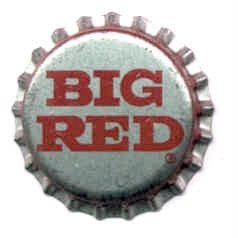 This is a typical San Antonio remedy. One Bean & Cheese Taco and your favorite Breakfast Taco, (I recommend a Chilequias), both on flour tortillas with hot sauce. Wash them down with an ice cold Big Red soda. Works every time! Sometimes a cup or two of good coffee helps as well, but for some strange reason, Mexican restaurants seem to have the absolute worst coffee, so you might need a extra stop unless you've got some good stuff at home.
This is a typical San Antonio remedy. One Bean & Cheese Taco and your favorite Breakfast Taco, (I recommend a Chilequias), both on flour tortillas with hot sauce. Wash them down with an ice cold Big Red soda. Works every time! Sometimes a cup or two of good coffee helps as well, but for some strange reason, Mexican restaurants seem to have the absolute worst coffee, so you might need a extra stop unless you've got some good stuff at home.